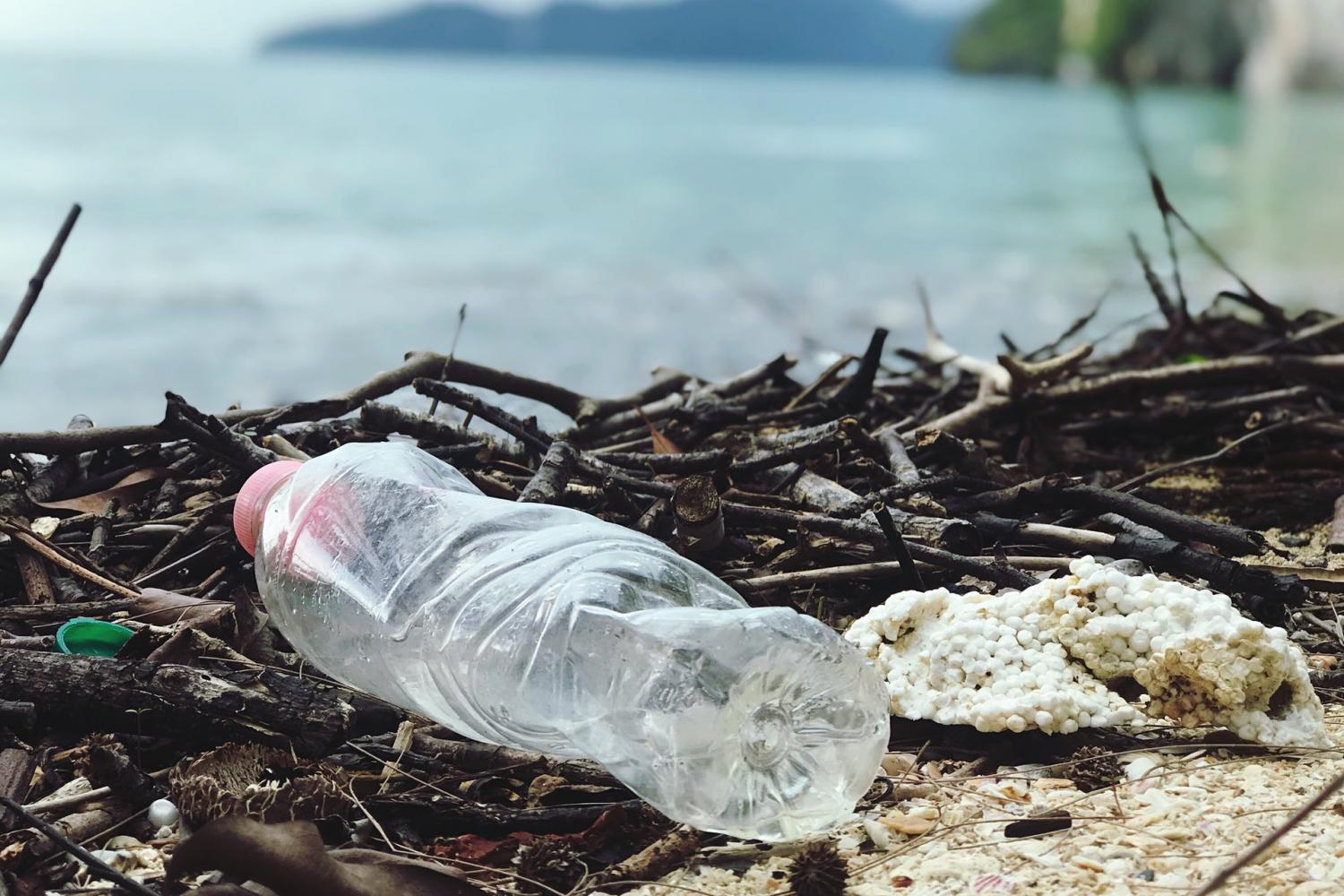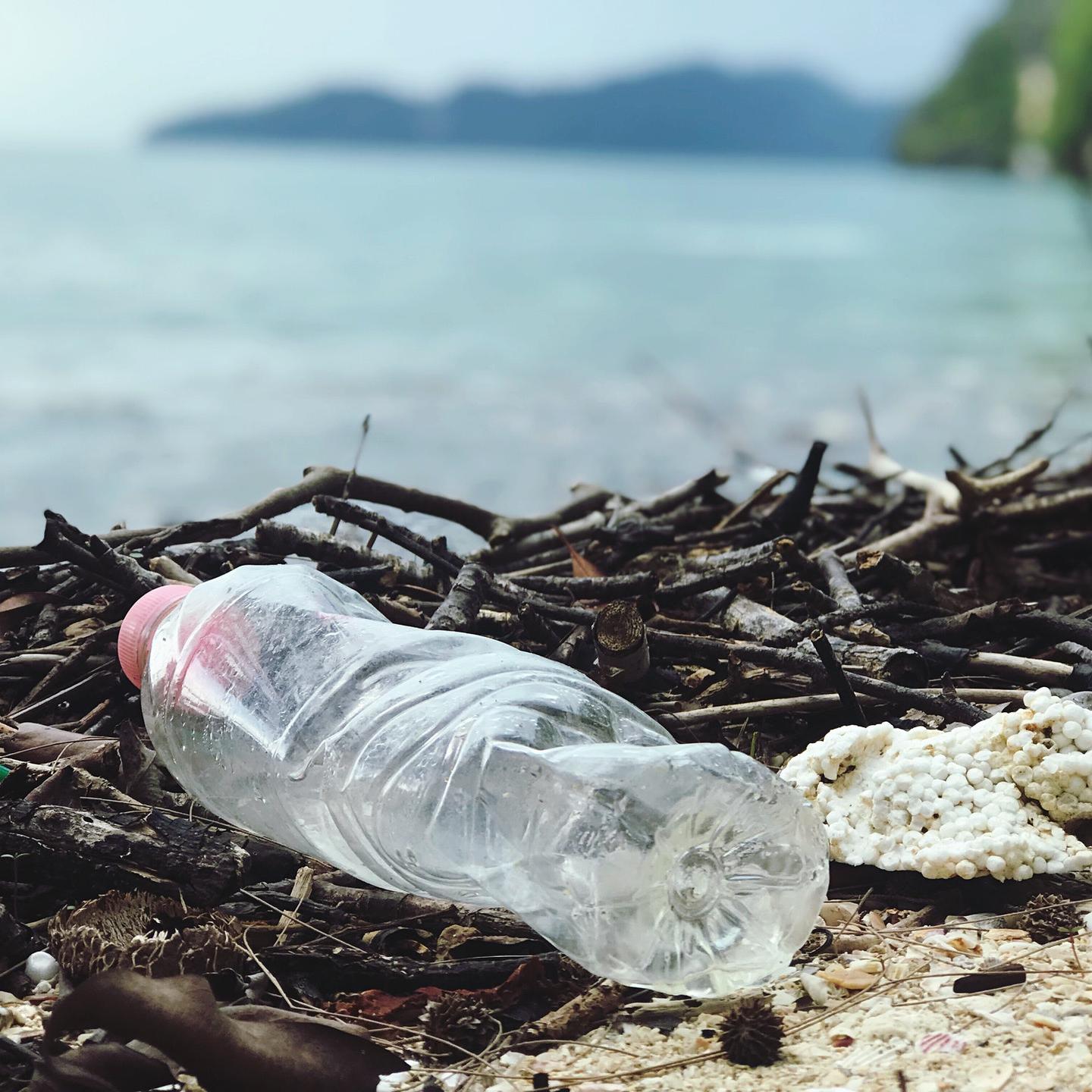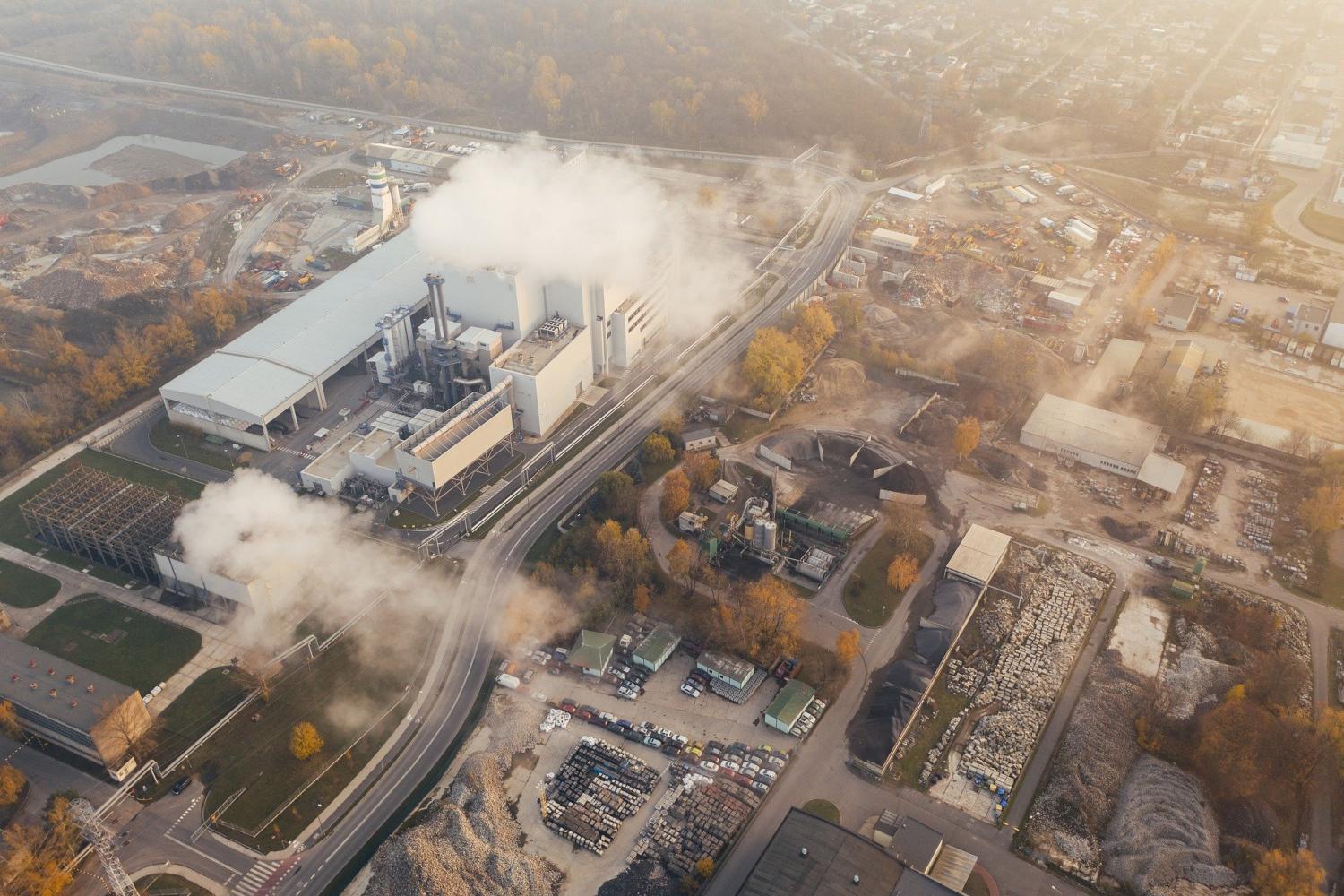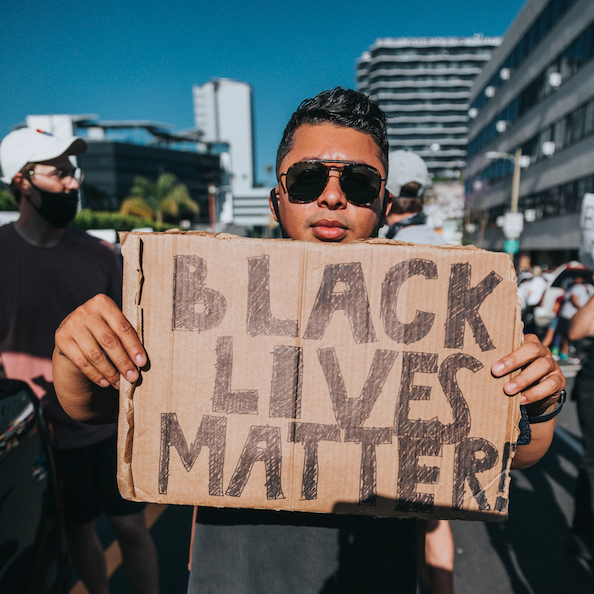Why the NFL’s Million-Dollar Clarity on Face Masks Matters


Earlier this week, the NFL levied a total of more than $1 million in fines against five coaches who refused to follow league guidelines on wearing face masks, as well as their teams. Though the news has been largely confined to the sports columns, the clampdown is a welcome move that could embolden other business leaders to assert a more aggressive stand on COVID-19 prevention.
NFL steps up its COVID-19 prevention game
The White House has yet to formulate a consistent, science-based policy on COVID-19 protection, leaving the job up to a patchwork of state and local policy makers. That complicates matters for large and small business alike that want to follow guidelines and protect their employees, customers, and associated vendors from contracting a lethal virus.
Regardless of whether or not a person shows symptoms of COVID-19, the scientific consensus is that everyone should wear face coverings in order to prevent the spread of the virus.
The NFL, for one, has acknowledged the need for consistent, aggressive rules on face masks, and its position has evolved in concert with the growing weight of scientific evidence.

(Editor's note - be sure you sign up for the upcoming 3BL Forum: Brands Taking Stands - Business Elects to Lead event next week, beginning Thursday, October 8. Register for free here.)
Last July, the league initially mandated that face masks would only be required for game officials, medical staff, and other field personnel with access to the bench area. At the time, the requirement did not apply to coaches and players.
However, in discussions with players and their representatives the league made it clear that Black males were especially susceptible to COVID-19, a disturbing trend that has been supported with additional data in the following months.
Players were also put on notice that rule breakers would be subject to fines.
NFL to the public: no fumbling the ball on face masks
During July several NFL teams began announcing that fans would be required to wear face masks when attending games. Rather than leaving the decision as a piecemeal one, on July 22 the NFL confirmed that any fans at games would be required to wear masks on a league-wide basis.
The league did not set rules for fan attendance, as those would be governed by state-based policies on the permitted size of public gatherings. However, as the summer progressed and no consistent federal policy on COVID-19 emerged, by the end of August most teams announced that no fans would be permitted to attend games, at least during the first weeks of the season.
Concurrently with those announcements, the NFL upgraded its rules for COVID-19 prevention.
On September 1, the league announced that all coaches and other staff members would be required to wear face masks during games.
The new protocols also included new rules for the size of a team’s traveling party, and new testing requirements for owner access to a team’s locker room, field, or travel charter.
As cited by USA Today, NFL Commissioner Roger Goodell explained that the new rules were a collaborative effort by the league, the NFL Players Association and medical experts, to establish a “comprehensive set of protocols that put us in the best possible position to complete the season, culminating with the Super Bowl in Tampa Bay.”
Why business leadership matters more now than ever
The new rules were partly in response to a series of positive test results among players and personnel during the summer training season, in addition to general concerns about the spread of COVID-19 in the U.S.
The league’s concerns mirror a long-expressed consensus among public health officials, that an increase in social activity will coincide with the onset of cooler weather in the fall, leading to a “second wave” of COVID-19 cases.
Despite the informed opinion of health experts and the league’s renewed emphasis on COVID-19 prevention, during the second week of play three coaches — Vic Fangio of the Denver Broncos, Pete Carroll of the Seattle Hawks, and Kyle Shanahan of the San Francisco 49ers — were seen on the sidelines without wearing face masks. Earlier this week, they were reportedly each fined $100,000 for violating the league’s mask policy. Their teams were also reportedly fined an additional $250,000.
Apparently, the message did not get through to New Orleans Saints head coach Sean Payton and Las Vegas Raiders head coach Jon Gruden, who were observed without face masks during Monday night’s game. Both teams were also fined $250,000.
“This is clearly a rule that the league is going to enforce,” noted Sports Illustrated.
The NFL’s strong policy on face masks is in stark contrast to President Trump’s on-again, off-again — mostly off-again — policy. In fact, the president has actively encouraged his followers to violate both state rules on public gatherings and expert guidance on masks. He has insisted on staging in-person rallies at both outdoor and indoor locations, even in cities and states where such gatherings are not permitted under COVID-19 prevention guidelines. Most of the attendees do not wear masks.
This week has seen an especially egregious illustration of the President’s misdirection on COVID-19 prevention.
At a rally in Toledo, Ohio on Monday, the president insisted that COVID-19 “affects virtually nobody."
As cited by CBS News and other news organizations, the president went on to ignore the statistics regarding higher risks for Black males, stating that "it affects elderly people. Elderly people with heart problems and other problems. But they have other problems, that's what it really effects, that's it.”
The president also ignored the fact that people of any age risk serious illness and death from COVID-19.
In a tragic coincidence of timing, on Monday the death of a young doctor in Houston, Texas, also surfaced on the media radar, putting the lie to the president’s inference that only elderly people need to fear infection.
“A Houston doctor died early Saturday after fighting for her life in an intensive care unit since becoming infected with COVID-19 in July, according to a statement from her family,” reported the Houston Chronicle.
CNN followed up with additional details, noting that “Adeline Fagan, a second year OBGYN resident living in Houston, died early Saturday after a couple months-long battle with COVID-19, her family announced in a post on a GoFundMe page established on her behalf. Fagan had just started her second year of residency in Houston when she got sick, the GoFundMe page said.”
Though mostly working in the delivery ward, Fagan also worked in the ER with COVID-19 patients, where she may have been exposed to the virus.
In addition, this week the Centers for Disease Control guidance has swung from downplaying the risk of airborne transmission, to confirming the risk, and back to downplaying the risk all in the span of four days.
As this has occurred, reports have surfaced that Trump son-in-law and official advisor Jared Kushner deliberately steered federal policy out of the COVID-19 response field, laying the burden on states.
This tragic — and potentially criminal — mismanagement of a public health crisis has motivated the NFL and other business leaders to take action in the absence of strong federal guidelines and consistent information on COVID-19 prevention. If the events of this week are any indication, it looks like they will have much more work to do in the coming weeks and months.
Sign up for the weekly Brands Taking Stands newsletter, which arrives in your inbox every Wednesday.
Image credit: Rwelborn/Pixabay
Companies Say They Support the Circular Economy, But Their Actions Speak Otherwise


Climate Week is certainly much different this year. Corporate leaders and governments are faced with a new challenge of rebuilding in the wake of COVID-19 while working towards a net-zero and circular economy future; hence the theme of this year’s climate summit. Too often, we’re told to recycle more, or are surrounded with messages and invitations focused on worldwide sustainability projects and clean ups. While these may seem like steps forward towards achieving recycling goals or reducing the consumption of plastic, we must not be naive.
We’re a long way off from a circular economy, says one report
An investigative report recently released by The Changing Markets Foundation exposes missed targets and lack of action by the world’s largest plastic polluting companies. The report analyzed the plastic reduction efforts and voluntary recycling commitments of large global companies including Coca-Cola, Colgate-Palmolive, Danone, Mars, Mondelēz , Nestlé, PepsiCo, Perfetti Van Melle, Procter & Gamble and Unilever.
Over the past decade, these have companies voluntarily committed to ambitious recycling, circular economy, and plastic-eliminating efforts and have joined alliances congruent to these goals. But according to Changing Markets, these same corporations are also contributing to the delay and derailment of efforts to halt plastic reduction.
From Changing Markets’ perspective, companies are doing so through covert lobbying against plastic reduction legislation as well as the misrepresentation of data and distraction tactics. Futile publicized campaigns like beach clean-ups, the funding of research projects, and the promotion of chemical recycling are among the tactics various corporations have practiced to evade their contributions – and therefore their responsibilities - to the global production of plastics.
For example, Mars is part of the Ellen MacArthur Foundation's New Plastics Economy Global Commitment (EMF). This organization launched an initiative, The New Plastics Economy, in 2017 to tackle plastic pollution. The problem with this alliance, alleges Changing Markets, is that it lacks any mechanism to hold companies responsible for missed targets – and therefore there is no accountability or incentive for companies to improve their recycling performance or circular economy progress.
Instead, EMF has discussed technologies such as new developments in chemical recycling – currently one of Mars’ strategies – as among the options to take on plastic pollution. Chemical recycling transforms plastic waste into new plastics or fuel through heat, pressure, and chemicals. Changing Markets, however, dismisses chemical recycling as an effective solution as it insists such a process poses risks to environmental health as the technology releases toxic substances in the atmosphere.
Companies publicize circular economy goals, while launching countermeasures on the sly
Corporate commitments to recycle more must be observed carefully. As companies push recyclable products or commit to long-term circular economy objectives, there is a lack of campaigns or commitments in collecting and sorting these very plastic products. How can we guarantee plastic is recycled when there is no policy or legislation that ensures it will be collected and organized in the first place? More specifically, are companies being impactful if they commit to recycling but don’t support such legislation or have any plans to mandate plastic collection? Voluntary commitments and alliances to causes such as the circular economy are great. Climate Week calls exactly for this – collective, corporate action. But Changing Markets makes the case that such commitments perpetuate ongoing challenges, such as the lack of transparency, ambition and accountability.
In March 2020, Mondelez International joined the New Plastics Economy Global Commitment but according to Changing Markets, it did not disclose details about its plastics footprint. Furthermore, in its 2019 Impact Report, Mondelez did not mention any support for legislation that would regulate plastic collection or targets for recycled content. As stated in the report, supporting legislation that mandates plastic collection, reuse models and deposit return systems are among the key solutions to plastic waste. Such actions help hold companies responsible for the plastic they are distributing across global markets.
In another twist, Changing Markets alleges that some companies are openly investing in producing more plastic. PepsiCo, as an example, is a member of Alliance to End Plastic Waste. Launched in January 2019, this alliance claims consumers are responsible for plastic pollution instead of companies that produce plastic. The alliance and its 47 members have pledged $1.5 billion towards plastic pollution over the next five years with an emphasis on improving infrastructure, technology, education, and cleaning up current plastic waste.
Changing Markets counters that such a public proclamation is actually contradicting what the Alliance’s members have done. According to the report, the Alliance’s members, including PepsiCo, have invested $186 billion between 2010 and 2017 in petrochemical facilities vested in increasing plastic production. As we struggle to eliminate the existing plastic surrounding us, the report brings up a fair question: Is it reasonable to create even more plastic items?
One additional point of criticism that the authors of the Changing Markets report direct at the Alliance is its approach to tackling the global plastics problem. For example, the group notes that the Alliance has worked with an NGO in Africa to launch programs focused on education and clean-ups. But the report alleges that the Alliance’s members produce the same plastics that litter these spaces. Furthermore, Changing Markets claims, “The focus on parks and reserves also conveniently helps to clean up the problem in areas frequented by tourists, without addressing the severe harm posed to communities from toxic dumps of growing plastic waste choking cities across the continent.”
International sustainability projects, investing in research and developing new eco-friendly or plastic-solutions are among the topics of discussion during Climate Week, whether at the official event or during virtual events aligned with this theme. Nevertheless, plastic waste continues to pile up as consumers’ attention is elsewhere.
Harnessing a crisis to boost plastic production
One of the report’s most pointed criticisms is its allegation that petrochemical companies are using personal protective equipment (PPE) as an excuse to expand capacity at their manufacturing plants. However, Changing Markets claims PPE makes up far less of what companies are producing as opposed to disposable plastic packaging.
“Oil, gas and petrochemical companies are banking on plastic production as a lifeline amid the declining profitability of fossil fuels,” says the report. “They are desperate to ensure its future, and unbind it from regulatory shackles, wherever they can. The industry’s rapid lobbying in response to COVID-19 shows its readiness to co-opt crises, manipulate harried politicians and exploit public fears to continue smothering the world with plastic.”
Editor's Note: In response to this piece, the Ellen MacArthur Foundation issued the following statement to TriplePundit:
"The Ellen MacArthur Foundation campaigns publicly and vigorously for many of the actions that the Changing Markets Foundation argues for in its report. We have called consistently for businesses to eliminate unnecessary plastic and shift from single-use to reuse models, while increasing transparency on their plastic footprint.
"At the same time, recognising voluntary industry action alone is not enough, we have called for a binding global agreement on plastics and the roll-out of EPR or equivalent schemes globally. Thanks to the Global Commitment we have seen, for the first time, more than 200 companies set common 2025 targets on plastics. Every Global Commitment signatory had to raise their ambitions in order to join and those who were unable to meet the barriers to entry have not been allowed to join. All business signatories must report publicly on the same targets, using the same metrics and definitions. 2019 was the first time that much of this data was gathered and made public.
"In November we are publishing our second progress report, which will allow for comparisons against last year’s data and show where progress was and wasn’t made. This transparency to media, investors, NGOs and the public is essential to accountability. We believe these are vital steps towards solving the plastic pollution crisis.
"We agree that voluntary agreements alone are not enough to solve plastic pollution and we believe governments and policy makers have a crucial role to play. It is critical that we also continue to work with companies, who have both the power and the responsibility to make changes to which materials and business models are used at scale. Both are necessary."
Sign up for the weekly Brands Taking Stands newsletter, which arrives in your inbox every Wednesday.
Image credit: Catherine Sheila/Pexels
People Are Taking Climate Change Seriously. More Companies Must Take That Sense of Urgency to Heart.


Recent disasters have dominated the news headlines, but it’s not only the California wildfires and recent hurricanes along the Gulf Coast that show climate change has arrived with a vengeance. Australia has faced rampant brush fires; the United Kingdom has struggled with floods; and Cyclone Amphan wreaked havoc across much of Bangladesh and its neighbor, India.
Citizens believe climate change is underway - after all, they're living it
Citizens across the globe get it. Many are already living it. A recent GlobeScan survey revealed that, across many nations, people are taking the threats of climate change seriously. Researchers found that in countries as different as Mexico and South Korea, people almost unanimously believe climate change is a “very serious” or “somewhat serious” threat — and they agree at a rate of at least 96 percent. Across the board, the figure hovers around 90 percent. Even in the U.S., more than 80 percent of residents told GlobeScan researchers they believe these risks are serious, an increase of one-third since 2014.
But despite the evidence that the impacts of climate change are already with us, much of the business community still isn’t taking the threats of climate change seriously – notwithstanding all the Climate Week announcements and invitations you may have seen in your inbox over the past several days.
True, there are pledges to become a “regenerative” company by 2040 or 2050; other companies have pledged to become net-zero by 2040, which would be 10 years ahead of the globally agreed-upon 2050 goals set during the 2015 Paris climate talks. Further, there is no shortage of companies making announcements that come across as frivolous when put into the context of Climate Week. Such pledges range from promises to turn plastic bottles into seating at resorts or, in the case of major energy companies, investments in carbon capture technology.
The problem is that we may not be able to wait that long.
The pandemic adds to the sense of urgency
The COVID-19 pandemic adds to the sense of urgency. As unfounded fears have festered over reusable shopping bags and containers, threats to waste management systems are just the beginning of the risks society faces. As 99 percent of single-use plastics are manufactured from fossil fuels, the “pandemic of plastics” has its own impact on global emissions.
The roster of companies that have pledged to align with the circular economy movement is a long one. But as many corporations say they are working with the Ellen McArthur Foundation or the Alliance to End Plastic Waste, they are also undertaking a copious amount of work behind the scenes to oppose and block legislation that would otherwise help take on the single-use plastics crisis.
Time is running out for companies to take the immediate, bold action we need to address climate change and help countries meet their climate goals. Many individuals are already saying climate change has had an impact on their lives. The same GlobeScan report reveals a high percentage of people who share such sentiment — notably in nations with lengthy coastlines, such as Mexico, Turkey, Vietnam, Italy and Thailand. They don’t have time to wait until 2040. We need to see more action now.
It's not only the sustainerati that look at all these goals and commitments with weary eyes.
“Of course, it’s one thing to set a goal, and another to actually achieve it,” writes Politico’s Catherine Boudreau as she summarized the flood of announcements made so far during Climate Week.
Some new climate stalwarts may surprise you
Oddly enough, some companies that are largely responsible for this lurch into a climate crisis, as in energy firms, appear to be moving the fastest. For example, Royal Dutch Shell recently announced it’s looking into cutting as much as 40 percent of its oil and gas production so it can revamp its business model and focus more on renewables. One analyst has even suggested that, should the energy sector move toward “killing itself slowly,” the result could be that they would become income trusts that still operate at a handsome profit for investors, only without the massive capital outlays needed to discover and reap new oil and gas reserves.
If companies like Shell can pivot quickly, laggard companies in different sectors can do the same. Hence the narrative shouldn’t focus on the companies that can make the boldest long-term goals; this really should be about who can adopt to this new reality the fastest.
Sign up for the weekly Brands Taking Stands newsletter, which arrives in your inbox every Wednesday.
Image credit: Marcin Jozwiak/Pixabay
Climate Action 100+ Urges Dozens of Companies to Move Fast on Climate Targets


More than 85 major fires are burning across the West Coast, blanketing the country with index-breaking unhealthy air quality; hurricane season in the Atlantic is using the Greek alphabet to name storms for only the second time; August 2020 is now the hottest month ever recorded; and, as part of its call for bolder climate action, Scientific American made its first presidential endorsement in the publication’s 175 year history.
These “unprecedented” and “record-setting” and “once-in-a-lifetime” climate events that seem to occur with an increasing frequency provide quite a backdrop as Climate Week 2020 kicks off with over 350 events across New York and around the world.
One common thread throughout the events scheduled for Climate Week this year is the pursuit of a net-zero future, and Climate Action 100+ is taking the opportunity to double down on its ongoing efforts to get leading companies to commit to getting there.
This year Climate Action 100+ sent a letter to the CEOs and chairs of the board of 161 global companies. Not coincidentally, those companies include 100 “systemically important emitters” - responsible for two-thirds of annual global industrial emissions - and more than 60 others who could drive the clean energy transition. It calls for these companies to go beyond a simple commitment to net-zero business strategies by setting and publishing benchmark targets to measure their progress.
After its 2017 launch at the One Planet Summit, Climate Action 100+ gained worldwide attention and emerged as one of 12 key global initiatives to tackle climate change after getting more than 500 investors, overseeing more than $47 trillion in assets under management, to sign on.
“Investors and their beneficiaries are becoming increasingly vocal and demanding more tangible climate action on the part of companies, especially those that are high emitters of greenhouse gases,” Fiona Reynolds, CEO of the Principles for Responsible Investment (PRI) and Climate Action 100+ Steering Committee member, said. “Central to achieving climate goals is the setting of clear targets on how companies plan to move to net-zero as well as ensuring that they are transparent and held accountable for actions taken.”
This investor network works with the companies they invest in to improve governance, curb emissions, and strengthen climate-related financial disclosures. These include Airbus Group, BP, General Electric, General Motors, Nestlé, PepsiCo, Proctor & Gamble Company, The Coca-Cola Company, Walmart, and Dow, among many others.
Fortunately, these companies have not been stagnant. 50 of them have already set reduction targets or released statements that set a target for net-zero emissions by 2050 or sooner, and 120 companies have now nominated a board member or board committee with responsibility for climate change oversight.
However, it underscores that there is more work to be done and foregrounds the need for more urgent action to get to net-zero emissions and prevent some of the impacts of otherwise avoidable climate change.
Another fact worth noting is that there is no objective standard on which these commitments are measured. The scope of emissions varies significantly, highlighting a need for more universal standards.
To that end, Climate Action 100+ announced the Net-Zero Company Benchmark. Slated for release in 2021, the benchmark will “standardize what constitutes a ‘net-zero aligned’ business strategy and how to measure alignment with a 1.5°C transition pathway.” It will also help guide businesses to discover transitional routes in their respective sectors and regions. The benchmark will also offer a comprehensive look at what companies are leading the charge in transitioning to net-zero emissions. In addition, it will provide a slate of other indicators for investors to appraise investment and corporate engagement strategies appropriately.
"It will send a strong message to corporate boards and management that companies across sectors have already begun to make the shift to a net-zero emissions business, and it is time for the rest to follow,” Mindy Lubber, Ceres CEO and President and Climate Action 100+ Steering Committee member, said. “Investors are ready to engage the initiative's focus companies to raise their climate ambition in order to accelerate the global transition to a net-zero emissions economy."
Image credit: Markus Spiske/Unsplash
Racial Injustice Has Changed How Nonprofits Operate for Social Impact


The United States has a long history of racial injustice. More people have become acutely aware of that unfortunate reality due to the recent deaths of people of color at the hands of law enforcement officers. Those atrocities capture the headlines and inspire individuals and businesses to do whatever they can to help. Relatedly, many nonprofits have adjusted their operations to ensure that they maximize their work's social impact.
A nonprofit spotlights how people can apply their skills for the cause
Many people who are eager to use their skills to help others initially feel frustrated because they don't know how to start and are unsure how to get in touch with the right resources. One nonprofit, Common Impact, specializes in encouraging skills-based volunteerism. Its representatives recently published a report showing how the COVID-19 pandemic disrupted several chances to volunteer.
However, the organization's research revealed that the health crisis brought about new ways to get involved, including those associated with racial injustice. One of the report's suggestions was for organizations to set up tables at outdoor protests and encourage people of color to register to vote. Change comes about in numerous ways, but many activists assert that using a vote is one of the most influential and enduring ways to cause it.
The report also mentions how social media expertise is especially valuable as social unrest and the coronavirus pandemic continue. A person may feel passionate about supporting the Black Lives Matter movement but cannot safely leave their homes because of a compromised immune system. Nevertheless, they could still set up internet campaigns, publish online content or organize support for bail funds.
Common Impact's example illustrates how nonprofits can play critical roles in spotlighting the options for people to apply their talents and abilities to spur the social justice movement. Once people know the specific ways they could get involved, many feel more empowered to respond proactively to the economic and social aspects of our current times.
Nonprofits work to address links between racial injustice and health disparities
The COVID-19 crisis arguably affects everyone to some extent. However, researchers looked at the early weeks of the pandemic and uncovered some disturbing trends. They found that poorer areas had more cases in the early periods of COVID-19 and that the death rate was higher for relatively less wealthy counties.
Research published elsewhere indicated that Black and Latinos in the United States are three times as likely to get infected and nearly twice as likely to die from COVID-19 compared to white individuals. Numerous factors could cause those outcomes, but access to health care and testing are two that analysts mention frequently.
Moreover, if a person perceives that the process for getting a test is too cumbersome, they may assume they just have a cold or the flu and go about their lives, hoping the symptoms don't worsen. The trouble is that such an approach can quickly spread the virus throughout communities. Fortunately, advances in testing mean that some kits provide presumptive COVID-19 diagnoses in 15 minutes.
Nonprofits responded by offering complimentary COVID-19 tests to the Black community. A Portland, Oregon, organization called Self Enhancement, Inc. expanded its existing services to Black community members by providing free tests no matter if people had symptoms. Efforts like these can help reduce the barriers that could otherwise cause a person to avoid getting screened.
In Michigan, a local health department joined two other organizations, including a housing nonprofit, to offer free COVID-19 testing days. Vincent Thurman, communications manager for one of the nonprofits involved, said, "The data shows that Black and brown communities are at a higher risk for contracting COVID-19, and we are happy to have free testing available to residents in our neighborhoods."
Collaborative efforts draw attention to Black voices
As protests gained momentum in the United States and worldwide, people realized they needed to focus on getting more racial injustice education to better understand what's at stake. Fortunately, the best way to do that is to get the firsthand perspectives of Black citizens. Plenty of high-quality articles and podcasts exist for people to explore.
Nonprofits teamed up with activists to offer Black individuals louder voices, too. To that end, one organization, Oklahoma Murals Syndicate, creates and advocates for public art in Oklahoma. Recently, the group joined activist and hip-hop artist Jabee Williams for the With Love Project. It continues to promote the voices of people of color through mural projects.
Further, the organization and artist developed several projects that give people of color a larger platform through art. Members of the public also have opportunities to watch the creators at work. Then, in early October, the artists will debut their work, complete with a live concert and tasty fare from local food vendors.
How can you support racial equality?
The racial injustice issue is so massive that you may feel overwhelmed by wondering how to help. One excellent thing to do is to prioritize purchasing from Black-owned businesses. Many of them have been hit hard lately and find that government aid, if they can even secure it, is not adequate enough for them to recover.
It's also vital to offer your resources to the dedicated nonprofits that encounter challenges every day and work to overcome them. Besides learning more about the organizations mentioned here, search for those in your area. Consider donating to them or volunteering your time.
If you get involved as someone who is not a person of color, understand that it's crucial you listen and follow the lead of those with personal experiences of racial injustice. Now is not the time to make assumptions.
Turning empathy into action
As you focus on educating yourself on racial injustice and start to grasp the deep-seated, incredibly widespread nature of such unequal treatment, you'll likely feel a huge assortment of emotions — anger, sadness and despair, to name a few. It's natural and expected to empathize with people who face extra difficulties because of their skin color. But thanks to the examples here, you can turn strong feelings into productive and meaningful responses.
Image credit: Nathan Dumlao/Unsplash
Fiber Toolkit Helps Fashion Industry Meet Sustainability Goals


With so many moving parts and players, the fashion industry continues to struggle to assess and manage sustainability standards throughout the entire production process.
The release of a new tool, though, could help companies more efficiently evaluate raw materials to meet sustainability requirements.
Gap Inc. is partnering with the Textile Exchange to release Gap’s Preferred Fiber Toolkit (PFT) by the end of this year. Textile Exchange, a developer of the toolkit and one of the independent reviewers along with the Sustainable Apparel Coalition, will be taking ownership of the toolkit for its broader distribution across the fashion industry.
"The development of the PFT has been crucial to Gap Inc.’s ability to set goals and develop internal awareness on how to design better products and set fiber strategies," said Diana Rosenberg, product sustainability manager for Gap Inc. in a prepared statement. "A rigorous and data-driven approach allows for greater confidence in our sustainable materials sourcing decisions, while creating an incentive to select more planet-friendly raw materials."
One of the functions of the web-based toolkit is to assess the environmental impact of some of the raw materials used in the fashion industry.
Without more specific guidance, companies sometimes turned to a brand-by-brand decision-making process to measure and explain sourcing choices, according to a statement from the Textile Exchange. The results were often subjective and opaque. At a time when customers, employees and other stakeholders expect more transparency than ever, the pressure is on for fashion brands to source and market more responsible and sustainable fibers.
Other environmental factors that are part of the toolkit’s evaluation protocol include biodiversity, land-use change and waste disposal. Human rights, labor concerns and animal welfare within raw material sourcing also are part of the assessment, added Liesl Truscott, director of Europe and materials strategy for the Textile Exchange.
The evaluation of raw material choices uses quantitative data inputs from the Sustainable Apparel Coalition's (SAC) Higg Materials Sustainability Index, Truscott continued. The PFT is designed to work along with SAC’s Product Tools, while the Higg Index allows many of the players in the fashion industry to evaluate and rank a company or product’s sustainability effectiveness.
“By aligning the PFT with Higg MSI data, users of both tools can seamlessly track the impacts of their decisions from fiber to full materials and products," said Joël Mertens, senior manager of Higg Product Tools for the Sustainable Apparel Coalition, in a statement.
Gap always had intended to release the toolkit for wider use in the industry, according to Rosenberg. “Gap developed the toolkit in partnership with Textile Exchange, MADE-BY/Anthesis with input from the SAC in 2018,” she said. “We used 2019 to work it into our organization and refine the methodology and add more materials. Due to the COVID-19 (pandemic), some of our timeline was delayed. This timing works well as we’d both like to see the toolkit expanded and improved upon from the broader industry. Textile Exchange has convened a Preferred Fibers and Materials Working Group, which includes Gap, to provide guidance to all.”
Textile Exchange says it plans to update the toolkit with new data and a broader set of fibers and materials so companies within the fashion industry can purchase materials with high sustainability scores. The group also anticipates working to identify areas where the industry could further reduce its impact on the environment to help the fashion world meet science-based targets. Currently, the updated toolkit and the proposed review process will be available to stakeholders for input later this year, noted the Textile Exchange.
The fashion industry is in desperate need of another tool to help improve its environmental standing. It continues to be one of the world's heaviest polluters. By many accounts, the sector is the second largest consumer of water after agriculture and generates between 8 to 10 percent of global carbon emissions, exceeding the amount produced by a combination of all international flights and maritime shipping, according to the United Nations Environmental Programme. Not to mention, the sector's use of harsh chemicals, non-biodegradable packaging and extensive shipping of products worldwide together contribute to its environmental footprint.
“As an industry, apparel and retail have struggled to cohesively measure and explain sourcing material choices,” according to Truscott. “The goal of the toolkit is to provide clear guidance and alignment for companies to use as guidance when making material sourcing decisions.”
Image credit: Waldemar Brandt/Unsplash
The B Corp Movement Starts Recruiting Multinationals


B Lab, which to date has enlisted more than 3,500 companies - otherwise known as B Corps - in 70 countries to be a force for social good in the world, recently announced the launch of B Movement Builders. This initiative seeks to bring together multinational brands working to improve the role of business in the world.
From retail to fragrances, B Lab is targeting billion-dollar companies
Four companies will serve as founding members: vegetable processing company Bonduelle, steel supplier Gerdau, flavor and fragrance company Givaudan and retailer Magalu. Food and beverage company Danone and beauty brand Natura & Co will act as mentors.
The announcement comes at a time when economic stability is being challenged by the COVID-19 pandemic and the future of business-as-usual is less certain than ever.
Furthermore, this year’s Climate Week, which kicks off today, serves as an example of how companies aligned with the B Corps movement can help galvanize action. For example, during last year’s COP25 talks in Madrid, more than 500 B Corps announced they would commit to become net zero by 2030: 20 years ahead of the targets to which companies and governments agreed at the 2015 Paris climate talks.
B Movement Builders is designed to support long-term value creation and a resilient economy for all stakeholders through increased credibility and accountability mechanisms. Founding members will not only have access to the two mentor companies, but will also collaborate with other Certified B Corps.
There’s no time for B Corps like the present
The coalition acknowledges that business has an important role to play in striking a balance between people, profits, and the planet and are leveraging this opportunity to lead by example and encourage other businesses to do the same. And considering the events that have unfurled over the past six months, the door is wide open for the private sector to leverage more responsibility in helping to solve society’s most pressing challenges.
“During one of the most tumultuous times in world history, we are witnessing big business take unprecedented stances on pervasive and complex issues, such as racial injustice, public health and climate change -- perhaps one of the few silver linings we’ll take away from 2020,” says Susan McPherson, founder and CEO of McPherson Strategies, a communications consultancy that focuses on the intersection of brands and social impact.
According to McPherson, businesses are already witnessing a transformation of what measures a company’s success due to this perfect storm of COVID-19, Black Lives Matter and the ongoing economic volatility.
“Corporate leaders are rapidly realizing that there’s no going 'back to normal' and thriving in a post-pandemic world will require an entire new playbook that redefines the role of business. B Corp’s B Movement Builders not only offers an efficient roadmap to sustainable growth for larger corporations, it also provides third-party validation, access to collaborative networks and the consumer goodwill necessary that can help build a lasting competitive advantage,” adds McPherson.
A $60 billion coalition with a quarter of a million employees
Bonduelle, Gerdau, Givaudan and Magalu are all large, multinational, publicly traded companies with at least $1 billion USD in annual revenue. Cumulatively, they represent approximately $60 billion in revenues and have 250,000 employees. Mentor companies Danone and Natura & Co are also large multinationals that have already certified at least 30 percent of their global business. The founding members must already either be working towards B Corp certification, have B Corp subsidiary companies, or be aligned with the B Corp movement to use business as a force for good through collaboration with their mentors and other certified B Corps.
B Movement Builders marks an important evolution for the B Corp certification movement, which has primarily certified small-to-midsize businesses with fewer than 250 employees until now. It is the first initiative of its kind to pave the way for larger businesses to get involved with B Corps and to leverage their unique skill sets to address the impacts of climate change, racism, and other forms of oppression through the global economy.
Like the B Corp certification process, participation in the B Movement Builders program is voluntary. This opt-in approach allows businesses to demonstrate their proactive approach to sustainability, accountability and transparency. Beyond the desired positive internal impacts such as supply chain resilience, employee satisfaction, or movement towards a stakeholder capitalism, B Movement Builders also have the ability to influence trends across the industry, encouraging other business leaders and organizations to join the sustainable business movement.
In the public announcement, B Lab said, “The decisions that all companies make create ripple effects for stakeholders that continue throughout the global economy.” Joining B Movement Builders provides companies an opportunity to publicly acknowledge their powerful impact and commit to working in collaboration with like-minded businesses to affect positive change for their customers, employees, and communities.
Image credit: Valentin Antonucci/Pexels
It’s Time the U.S. Insurance Industry Drops Fossil Fuels


The world knows how to tackle climate change: transition from fossil fuels to renewable energy. Stop building new coal mines and oil wells and build more wind and solar farms. It’s really not that complicated.
We also know who bears the brunt of climate change: catastrophic fires, rising seas, and devastating hurricanes disproportionately have an impact people of color and developing countries. Those least responsible for creating the problem are the ones who are on the front lines of it.
At Ben & Jerry’s, the issue of climate change is personal. We’re already seeing impacts in our global agricultural supply chains that affect the quality and cost of our ingredients and the livelihoods of those who grow them. Like everyone else, we have a role to play in the transition to clean energy. From on farm biodigesters to solar at our Waterbury, Vermont ice cream factory, we’re reducing the impact our company has on the climate. But just reducing our own emissions isn’t enough. That’s why we’re thinking about how we spend our money, who we work with, and who provides services to our company, including insurance.
Insurance may not seem like an obvious place to fight climate change. But the fossil fuel industry doesn’t work without insurance. The world can’t afford a single new coal plant if we’re going to avoid climate catastrophe, and not a single new plant could be built without insurance. Without insurance, ancient forests couldn’t be cleared to make way for open tar sands pits that spew pollution into the air. And without insurance, pipelines couldn’t transport oil over thousands of miles, often leaking into the air, water, and soil that Indigenous Peoples—and many others—rely on.
That’s why Ben & Jerry’s, along with over 60 other businesses, recently issued a statement calling on U.S. insurance companies to stop insuring and investing in the fossil fuel industry that is driving climate change. The U.S. insurance industry is one of the last refuges of fossil fuel companies worldwide. While many European and Australian insurers have adopted policies to end or reduce support for fossil fuels, few U.S. companies have followed suit.
As our country has become more focused on issues of systemic racism and the white supremacy that fuels it, it’s important to acknowledge that climate change is not just an environmental issue. It is as much about equity and justice as it is about rising sea levels and melting ice caps.
People of color aren’t just on the front lines of the impacts of climate change—they’re also the most likely to be directly harmed by the coal mines and oil wells driving this crisis. From St. James, LA in the heart of cancer ally, to neighborhoods surrounding refineries in the East Bay, black people are 75 percent more likely to live next to oil and gas facilities. As a result, black children experience asthma at rates twice that of white children, and black mothers are twice as likely to have stillborn babies.
Around the world, fossil fuel projects are often constructed on Indigenous Peoples’ lands without their consent, poisoning their lands and waters. This is no accident: Indigenous Peoples have protected their lands and forests for generations, meaning these areas are rich in resources and prime targets for industry. Fossil fuels are one more act of violence against black and Indigenous communities.
Take, for example, the Trans Mountain tar sands pipeline in Canada, which has moved forward over the protests of First Nations whose lands have been polluted by the pipeline’s 85 spills to date. First Nations tribes wrote to every insurance company providing coverage for the pipeline, and while Zurich, Talanx, and Munich Re dropped out, Liberty Mutual, Chubb, and others still insure it.
Fossil fuel installations like Trans Mountain can’t operate without insurance, but the insurance industry can certainly survive without fossil fuels. Coal accounted for less than 1 percent of AIG’s 2019 premiums, but remains the single biggest contributor to global warming. Fossil fuels collectively account for 89 percent of global carbon emissions.
Fossil fuels aren’t just a bad investment for the planet, but for our economy as well. A recent report from the U.S. government finds that climate change poses a major risk to the stability of the U.S. financial system. Wildfires, storms, droughts, and floods carry hefty price tags, and the financial shocks they cause threaten the whole system. Insurance companies, of course, are on the hook for billions in losses. Even as they pull out of wildfire-prone areas, it’ll be people who’ve lost their homes and taxpayers left holding the bill.
The insurance industry is in the business of risk management, and climate change poses a huge threat—to their balance sheets, to our whole economy, and to peoples’ livelihoods and very lives. It hits the poor and marginalized first and hardest, but as the scale of the fires that are burning in the West show, we are all starting to feel the impacts.
For businesses looking to advance racial and environmental justice and combat climate change, often-overlooked financial services like insurance can be part of the solution. A clear first step is for all of us in the business world committed to combating climate change to talk to our insurance companies: ask them about their fossil fuel policies, and encourage them to adopt policies that protect people and the planet, not just their bottom lines.
Sign up for the weekly Brands Taking Stands newsletter, which arrives in your inbox every Wednesday.
Image credit: Troy Squillaci/Pexels
How We Can Rethink Agriculture So It’s More Local


Climate Week is a reminder of how susceptible global agriculture systems are to climate change risks. More than 800 million people went to bed hungry every night even before COVID-19 disrupted the global food supply chain, which put an additional 130 million at risk of food insecurity.
This unprecedented crisis comes as industrial agriculture already struggles to feed a growing global population under threats of declining resources and an increasingly inhospitable environment.
While we can still produce enough food to feed the world today, we are running out of time. Many experts believe that conventional farming techniques are becoming unsustainable because of the vast amounts of land, water and energy required, as well as additional crop failures that will occur with the warming climate. To achieve sustainable food security, we must fundamentally disrupt the traditional forms of agriculture. We must pivot towards more cost-effective food production that is closer to home, more sustainable than factory farming and less land intensive.
Building more local capacity for agriculture
With a global population projected to exceed eight billion in 2023 and 10 billion by 2056, we can ill afford the inefficiencies and incremental gains of today’s industrial agriculture. Feeding 10 billion people will require an additional 109 million arable hectares, a landmass larger than Brazil. Given that 80 percent of arable land is already in use, the world faces even more acute food shortages if we can’t figure out how to grow more with less and get it where’s it’s most acutely needed.
The first step is to decentralize food production and distribute it more locally. When the 2017 famine in South Sudan took hold, it wasn’t because there wasn’t enough food to feed the five million people; it was because disruptions to the food supply prevented its distribution. Similarly, when food supply disruptions caused harrowing shortages on American supermarket shelves in the early months of the pandemic, we all witnessed how quickly panic and hoarding set in.
Urban agriculture is one way to build more local capacity. Building in cities, even on rooftops, can improve local food security and nutrition in food deserts where underserved communities suffer from access to fresh produce. Studies show that urban agriculture can meet 15 to 20 percent of global food demand today.
The next step is to bring food production indoors, when and where it makes sense. Technological innovation has helped bring food closer to local communities, enabling food to be grown more in places once thought impossible. However, we need to rethink our approach to indoor growing systems.
Today’s most advanced greenhouses and indoor vertical farms have significant shortcomings. Vertical farms, for instance, require massive amounts of energy due to the need for climate control systems and artificial lighting. Some argue that energy and environmental costs of vertical farms are offset by the reduced “food miles” of transporting food from afar. But as climate and environmental scientist Dr. Jonathan Fole points out this argument turns out to be a red herring. Local food typically uses about the same energy per pound to transport as food grown away due volume and method of transport.
And both indoor vertical farms and greenhouses suffer from a lack of the sun’s full light spectrum, compromising the robustness of indoor plant growth as well as the quality of the food.
The need for precise controls
Instead, a new model of agriculture is emerging that is nimbler than large scale commercial farming, safer than outdoor farms, greener than greenhouses, more natural than vertical farms and more efficient than almost any other growing technique in terms of water consumption, power usage and CO2 production. It’s essentially a hybrid approach of all three growing modalities – outdoors, greenhouses and indoor farms. This “fourth way” of agriculture integrates and continually refines entirely new approaches to crops, operations, facilities, systems and the growing environment (COFSE). The model was developed to produce far higher yields per acre than outdoor farms, superior yields to greenhouses and up to 20 percent better yields than comparably sized indoor farming systems.
The new model has two key principles: first, bring the full sun indoors and, secondly, create and control an indoor ecosystem precisely tuned for each kind of crop.
Plants grow most robustly and flavorfully in full natural sunlight. While it may seem counter-intuitive to some, even the clearest of glass greenhouses inhibit the full light spectrum of the sun. But new cladding materials have emerged recently that enable the near-full-transmission of the sun’s RV and light spectrum.
Unlike plastic or glass, these new transparent membranes can help crops achieve their full genetic (and flavor) potential. Natural light also warms the microclimate when necessary, dramatically reducing heating energy requirements. And at times when the sun isn’t cooperating, advances in supplemental grow lighting can extend the plants’ photoperiod – even beyond natural daylight hours – to maximize crop growth and quality, and reduce time to harvest by up to 50 percent or better.
Greenhouses and vertical farms are also compromised by outdoor and human-introduced contamination. The new model relies on creating a tightly-sealed, cleanroom-like microclimate that keeps pests, pesticides and other pollutants outside.
Thanks to artificial intelligence (AI), the Internet of Things and similar advances, growers can create highly automated growing systems that reduce human intervention and its associated costs. Finely-tuned convective air circulation systems enable the microclimate to remain sealed and protective. Natural temperature regulation using sunlight and organic foam-based clouds can significantly reduce air-conditioning electricity requirements. And highly automated hydration, fertilization and lighting are all continuously optimized by machine learning.
This new model, which has been designed over more than three years of research and development, is set to be put into large scale practice when the first of three new grow facilities completes construction on a 41-acre site in Coachella, Calif. Construction is set to commence within the next year. This unique approach, which included contributions from lighting experts who had previously worked at NASA sending plants into space, was developed to significantly affect local food security in an environmentally friendly way. It applies the best aspects of current growing methods – outdoors, greenhouse and indoors – and, where possible, replaces their shortcomings with superior technology and processes, creating an overall improved approach. Yet as a result of the facility design and automated growing system, it is designed to and expected to consume up to 90 percent less energy than traditional indoor grow operations while producing up to 10 to 20 percent better yields than other comparably sized farming systems.
The world we live in now gives us the intelligence and technologies we need to change the outdated legacy of how farming is done today into tomorrow’s way of producing food, creating a robust, delicious and nutritious food chain on a global level. Using these technologies, we can decentralize production, reducing our reliance on global supply chains and move high-density growing systems closer to communities to ensure food security for all.
Image credit: Devi Puspita Amartha Yahya/Unsplash
Businesses Must Help Fix a Broken Criminal Justice System. They Should Start with the Death Penalty


September 13 marked the 50th anniversary of Milton Friedman’s essay The Social Responsibility of Business is to Increase its Profits.
In it, Friedman opined that businesses’ only role was to make money, and that their only duty was to their shareholders. This was challenged last year by the Business Roundtable who declared a “fundamental commitment to all stakeholders”, including customers, employees, suppliers, communities, and shareholders. Support was substantial – the statement was signed by 185 CEOs of major U.S. corporations, and many felt it symbolized a moral revolution in capitalism that had been underway for some time.
This shift is borne out by the numbers. More than three quarters of consumers believe it is not enough for companies make money - they also expect companies to positively impact society. Eighty-nine percent of Americans would switch brands to one associated with a good cause, and 91 percent of global consumers expect businesses to operate responsibly to address social and environmental issues. It’s not just consumer facing corporations who face scrutiny on this - 35 percent of employees are reconsidering their current job because their company is not doing enough to address social justice issues externally.
This was made clearer than ever earlier this year, when the killing of George Floyd amplified the power built by the Black Lives Matter movement and triggered massive rebellions in response. It drove home what so many already knew – that the unfairness and inequality pervading the U.S. justice system is the most important social issue this generation faces. As the uprisings increased, almost every major corporation immediately released a statement of support – even those which had never advocated for racial justice before.
And many were just as quick to criticize – cries of “performative ally ship” echoed across social media. While it was obvious that people expected brands to stand up for what is right, in particular when it came to criminal justice and police brutality, there was rampant skepticism about commitment to real action. Businesses have to walk their talk, and follow-up their admittedly laudable words with meaningful advocacy.
But can companies actually help fix broken justice systems? It’s undeniable that by using their voice, influence and leverage, businesses can have an enormous impact when it comes to policy. When Nike’s 2018 campaign featured NFL quarterback and civil rights activist Colin Kaepernick, it sent a strong signal of support of racial equality. As a result, Nike’s reputation with the general public has strengthened, thanks in no small part to the company being out in front on supporting Black Lives Matter. No constituency is more important to policymakers than investors and employers, and this is truer than ever after the economic devastation of the coronavirus pandemic. The question isn’t whether businesses can create change. The question is on which issues and how authentically brands choose to focus attention and meaningful action.
There is so much that urgently needs fixing. Cash bail, mandatory minimum sentencing, juvenile sentencing – all embody the discrimination, ineffectiveness and cruelty that defines the justice system in the United States. But none more so than the death penalty.
President Donald Trump and Attorney General William Barr resumed federal executions this year, after a 17-year hiatus. This is despite the fact that violent crime has declined steeply in recent decades, along with support for capital punishment. Colorado voted to abolish earlier this year, joining 25 other states who have ended the death penalty or prohibit executions. According to a monumental 2019 Gallup poll, the majority of Americans now favor life imprisonment for crimes such as murder. Disapproval is by no means limited to the U.S. – we often forget that that capital punishment is widely condemned around the world as a human rights violation. Globally, 70% of countries have abandoned it, leaving the United States as an outlier among its closest allies in the continued use of capital punishment.
The reasons for such widespread opposition are clear – and it isn’t just that it involves killing people. The more people learn about the death penalty, the less they like it. Innocent people have been executed – for every 9 people executed in America, one person on death row has been exonerated. Children have been executed. The death penalty’s application has been repeatedly found to be racist, and nationally the Black death row population is 3 times that of the general death row population. This discrimination is particularly stark when it comes to the race of the victim. A recent study, published in the Harvard Civil Rights-Civil Liberties Law Review, concluded that defendants convicted of killing white victims were 17 times more likely to be executed than those convicted of killing black victims.
It’s also completely ineffective. It doesn’t make communities safer or address the root causes of crime. States with the death penalty have higher murder rates than those without it. There has been no subsequent spike in murder rates in the states that have abolished it. It also costs millions of dollars a year – some have placed the cost at $272 million per execution - at a time when public funds have never been tighter.
But what steps can companies take? For some the answer is obvious. Over the last decade, pharmaceutical companies, in opposition to the death penalty and to be in step with the European Union’s rejection of the death penalty, successfully slowed the rate of executions by banning the use of their drugs in executions in the United States. However for many businesses the practical ways they can meaningfully engage aren’t quite as clear, in particular if their particular product or supply chain has no interaction with justice system apparatus.
Some have led from the front and spoken out at the top. The CEO of Ben & Jerry’s is outspoken about the urgency to reform the criminal justice system and end mass incarceration. Virgin founder Richard Branson has spoken out repeatedly and passionately in support of abolition. We live in an era of rock star CEOs and when they speak out lawmakers listen - from op-eds to letters to events.
In May 2017, Lush launched a customer-facing campaign in 200 U.S. shops in partnership along with the National Coalition to Abolish the Death Penalty. The 10-day campaign petitioned legislators using signatures we collected in store and online and raised over $130,000 for abolition-focused organizations through the sale of the 31 States Bath Bomb. We also produced the short film Exonerated with Kwame Ajamu, who spent 27 years in prison for a crime he did not commit. As a campaigning company, we continue to advocate for abolition in the United States and I will in fact be speaking alongside Kwame at the upcoming Businesses for Justice Reform event, which you can register for here.
Others have used their leverage more directly. In 2019 the $36 billion French state pension plan and ESG funds blacklisted the U.S. treasuries market because the death penalty is allowed in some states. Every business has the voice and the tools to make a difference, and the Responsible Business Initiative for Justice has produced this 8-step toolkit to outline exactly what those are.
Profits are not the only thing people demand from their companies. Even if it were true 50 years ago, when Friedman wrote his essay, events of the past year have revealed the sea change. Businesses are expected to stand up for what’s right and protect human rights, and nowhere is this truer than with our justice system and the death penalty. But they can’t just talk. Now more than ever, people’s lives depend on it.
Sign up for the weekly Brands Taking Stands newsletter, which arrives in your inbox every Wednesday.